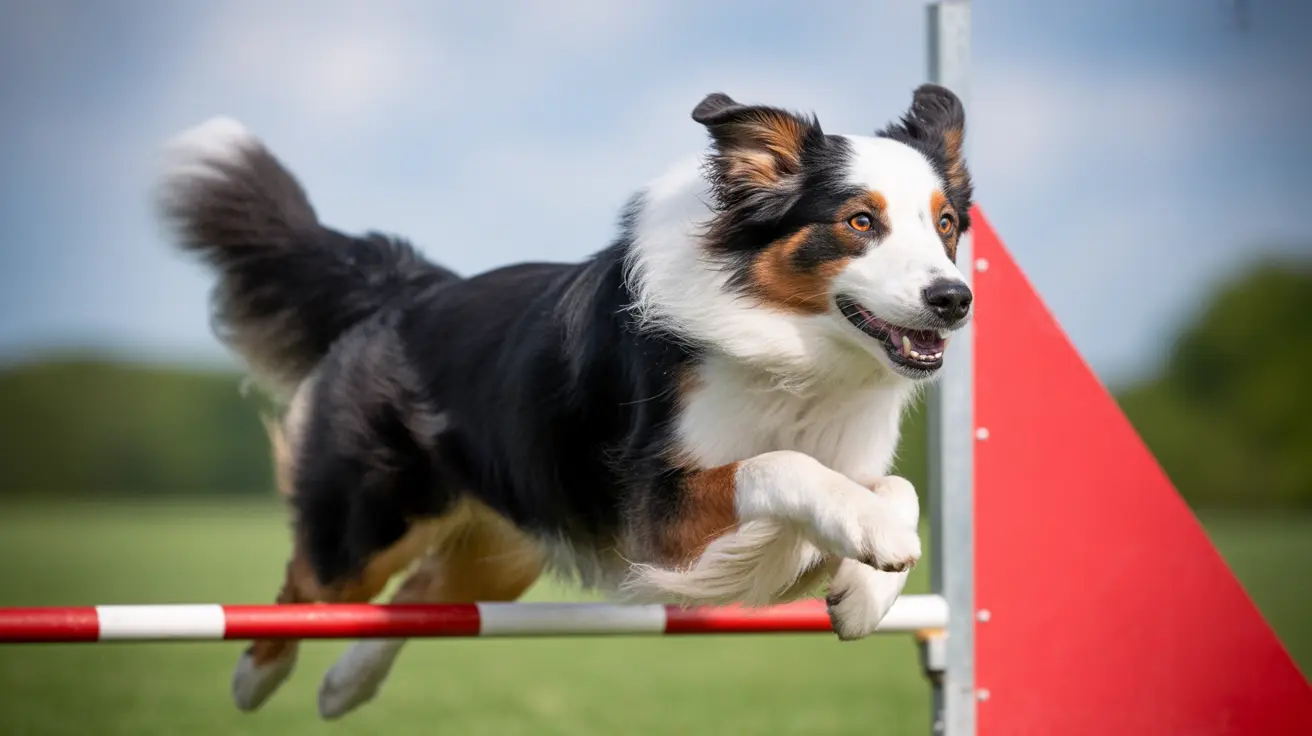Dog warts, scientifically known as canine viral papillomatosis, represent a common health concern that affects many dogs throughout their lives. These benign skin growths, caused by the canine papillomavirus, can appear suddenly and cause concern for pet owners. While typically not life-threatening, understanding their nature, causes, and treatment options is crucial for maintaining your pet's health and comfort.
The impact of dog warts varies significantly depending on their location and severity. From simple skin growths to more problematic oral papillomas, these viral-induced lesions can affect dogs of any age, though they're particularly common in puppies and young dogs with developing immune systems. This comprehensive guide will explore everything you need to know about managing and preventing dog warts effectively.
Whether you're dealing with a current outbreak or seeking preventive information, this article will provide you with essential knowledge about dog wart symptoms, treatment options, and prevention strategies to help keep your furry friend healthy and comfortable.
Understanding Canine Papillomavirus and Its Effects
The canine papillomavirus, responsible for causing dog warts, is highly specific to dogs and creates distinct types of growths depending on the strain and location of infection. These virus-induced growths can manifest in various forms, ranging from raised, cauliflower-like structures to flat, plaque-like lesions. Knowing the specific type of papilloma present on your dog can help determine the best management approach and anticipate possible complications.
Common Types of Dog Warts
Dog warts come in multiple types, each with differentiating features that can affect treatment and prognosis. The most common types include:
- Oral papillomas (mouth warts): These often develop inside the mouth, on the lips, or around the muzzle. They typically affect young dogs and may interfere with eating or cause oral discomfort.
- Classical raised warts: These wart-like bumps have a rough, cauliflower-like appearance and are most frequently seen on the skin, usually around the face, feet, or abdomen.
- Inverted papillomas: These lesions are generally found on the footpads and may appear as small, inwardly growing nodules, which can sometimes become irritated during walking.
- Flat or plaque-like warts: These are broader, flatter lesions that may be more challenging to spot. They are more common in older dogs and typically appear on the trunk or limbs.
Transmission and Spread of Dog Warts
Dog papilloma virus transmission occurs primarily through direct contact with infected animals or contaminated objects. The virus typically enters through small breaks in the skin or mucous membranes, making puppies and dogs with compromised immune systems particularly susceptible. Viral particles shed from the surface of warts can easily linger in the environment, which is why outbreaks are common in communal dog areas.
Common Transmission Routes
Understanding how dog warts spread helps prevent future infections. The most frequent ways dogs become infected include:
- Direct contact with infected dogs: Playful interactions, such as biting or nipping, can transfer the virus from one dog to another, especially if there are open sores.
- Shared toys and water bowls: Items that come in contact with an infected dog’s saliva or skin can harbor the virus and infect healthy dogs who use or chew them afterward.
- Communal areas like dog parks: Public spaces where dogs gather create opportunities for the virus to spread, especially when dogs share resources or play closely together.
- Grooming equipment: Brushes and clippers, if not properly sanitized between uses, can transmit the virus among dogs visiting the same grooming facility.
Identifying Dog Wart Symptoms
Recognizing dog wart symptoms early is crucial for proper management and treatment. These growths can appear anywhere on the body but are most commonly found in certain locations. It's important for pet owners to routinely check their dogs for suspicious growths and changes in the skin, especially after visits to communal areas or interactions with other dogs. Typically, warts are painless, but if they become large, ulcerated, or infected, discomfort or secondary symptoms may develop.
- Around the mouth and lips
- Near the eyes
- On the paws and between toes
- In the genital area
- On the face and neck
Warts found in or around the mouth may interfere with eating or drool production, while those on the feet or between toes can be irritated by walking or licking. If you notice swelling, redness, a sudden increase in size, or discharge from warts, seek veterinary attention promptly.
Diagnosis and Veterinary Assessment
Professional dog wart diagnosis typically involves a thorough physical examination and may include additional testing to confirm the condition and rule out other potential skin issues. Because some skin tumors or lesions can mimic warts in appearance, a veterinarian's assessment ensures proper treatment and peace of mind for the pet owner. In certain cases, further analysis may be recommended for persistent, unusual, or rapidly growing lesions.
- Visual examination: The vet visually inspects the affected area for typical wart characteristics.
- Biopsy in suspicious cases: If the wart appears abnormal, a small tissue sample may be collected and sent for laboratory analysis to rule out cancer or other diseases.
- Microscopic evaluation: Examining skin scrapings or cells under a microscope helps confirm the diagnosis of papillomatosis versus other skin conditions.
- Blood tests if systemic issues are suspected: In cases where a dog's overall health is a concern, bloodwork can identify underlying weaknesses in the immune system or screen for additional infections.
Treatment Options for Dog Warts
Many dog warts resolve without intervention as the dog’s immune system mounts a response. However, in cases where warts are numerous, persist, or cause discomfort, medical intervention may be recommended to improve your dog’s quality of life and prevent complications such as infection, bleeding, or interference with eating or movement.
Medical Interventions
Veterinarians can offer a range of targeted treatments for troublesome warts. The choice of therapy depends on the wart’s size, location, number, and the overall health of the dog:
- Surgical removal: For large or problematic warts, surgical excision under local or general anesthesia offers a quick solution and allows for direct examination of the tissue.
- Cryotherapy: This technique uses extreme cold to destroy wart tissue, providing a minimally invasive treatment alternative.
- Laser treatment: Highly precise, laser therapy removes warts with minimal bleeding and is often used for lesions in sensitive areas.
- Immunotherapy: In cases of widespread or recurrent warts, therapies aimed at stimulating the immune system can help the body fight off the papillomavirus.
- Topical medications: Prescription creams may be applied directly to warts in select cases, often assisting in shrinking the growth over time.
Natural Dog Wart Remedies
Some pet owners opt to support conventional treatments with natural remedies, but these should always be discussed with a veterinarian before use to ensure safety and efficacy:
- Vitamin E application: Rubbing vitamin E oil on the wart may promote healing in minor cases.
- Immune-boosting supplements: Certain supplements can strengthen immune function and help the dog’s body combat the virus more effectively.
- Dietary modifications: A balanced diet rich in nutrients supports overall health and indirectly aids the body’s ability to fight infections.
- Herbal treatments: Some owners explore herbal anti-inflammatory or immune-supportive options after veterinary approval, but scientific evidence for their effectiveness is limited.
Prevention Strategies
Effective dog wart prevention involves a proactive approach to reduce your dog’s risk of exposure and support their immune system. Pet owners should adopt habits that minimize occasions for viral transmission and promote long-term health:
- Regular health check-ups: Routine veterinary exams help detect warts early, before they cause problems or spread.
- Maintaining strong immune function: Ensure your dog receives proper nutrition, enough exercise, and appropriate vaccinations to keep their immune system in top shape.
- Proper sanitization of shared items: Clean and disinfect water bowls, toys, and bedding regularly to remove potential sources of infection.
- Limited exposure to infected dogs: Avoid letting your dog interact closely with animals known to have warts, particularly in communal environments like dog parks or daycare facilities.
Frequently Asked Questions
- What are dog warts?
- Dog warts are benign skin growths caused by the canine papillomavirus. They typically pose little risk to the pet's health but may require monitoring.
- How do dogs get warts?
- Warts are usually spread through direct contact with infected dogs or contaminated objects and surfaces, especially in high-traffic areas.
- Are dog warts contagious to humans?
- No, dog warts are species-specific and cannot be transmitted to humans or other animals such as cats.
- What do dog warts look like?
- They often appear as small, cauliflower-like bumps on the skin or within the oral cavity but can also take flatter or inward shapes depending on type and location.
- Do dog warts need treatment?
- Most warts resolve on their own within a few months, but persistent, painful, or infected warts should be seen by a veterinarian for appropriate care.
- Can you remove dog warts at home?
- It's best to consult a veterinarian before attempting home removal to prevent infection or injury.
- How can dog warts be prevented?
- Keeping your dog's immune system strong through proper nutrition and hygiene, and avoiding close contact with infected animals, are key preventive measures.
- Are dog warts dangerous?
- Most are harmless but can become problematic if they are irritated, bleed, or become secondarily infected, necessitating veterinary attention.
- Do dog warts go away by themselves?
- Yes, many dog warts disappear as the dog's immune system mounts a response, particularly in healthy young dogs.
- When should I see a vet about dog warts?
- If warts bleed, grow rapidly, cause your dog discomfort, or don’t resolve within a few months, consult your veterinarian for a full assessment.
Understanding and properly managing dog warts is essential for maintaining your pet's health and comfort. While most cases resolve naturally, staying vigilant and working closely with your veterinarian ensures the best possible outcome for your furry friend. Remember that prevention through good hygiene practices and maintaining a strong immune system is always better than dealing with an active infection.






